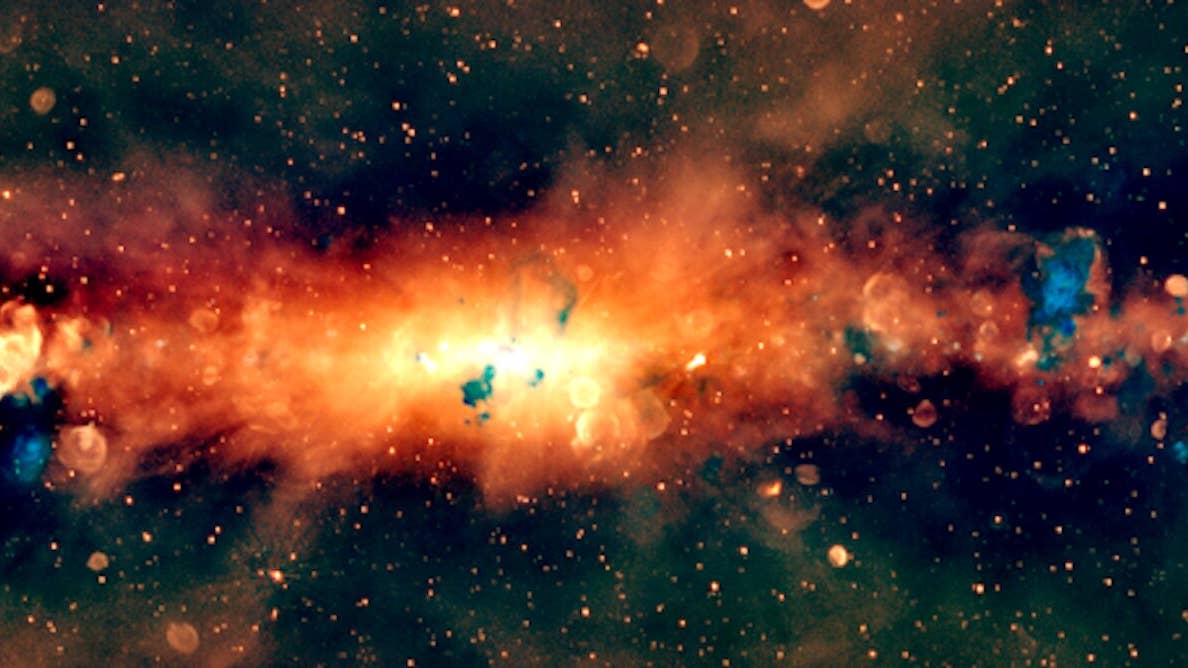Russia and China Want to Build a Nuclear Power Plant on the Moon

Share
Supporting any future settlement on the moon would require considerable amounts of energy. Russia and China think a nuclear power plant is the best option, and they have plans to build one by the mid-2030s.
Lunar exploration is back in fashion these days, with a host of national space agencies as well as private companies launching missions to our nearest astronomical neighbor and announcing plans to build everything from human settlements to water mining operations and telescopes on its surface.
These ambitious plans face a major challenge though—how to power all this equipment. The go-to energy source in space is solar power, but lunar nights last 14 days, so unless we want to haul huge numbers of batteries along for the ride, it won’t suffice for more permanent installations.
That’s why Russia and China are currently working on a plan to develop a nuclear power plant that could support the pair’s ambitious joint exploration program, Yuri Borisov, the head of Russia's space agency Roscosmos said during a recent public event.
"Today we are seriously considering a project—somewhere at the turn of 2033-2035—to deliver and install a power unit on the lunar surface together with our Chinese colleagues," he said, according to Reuters.
Borisov provided few details other than saying that one of Russia’s main contributions to the countries’ lunar plans was its expertise in "nuclear space energy." He added that they were also developing a nuclear-powered spaceship designed to ferry cargo around in orbit.
"We are indeed working on a space tugboat,” he said. “This huge, cyclopean structure that would be able, thanks to a nuclear reactor and high-power turbines...to transport large cargoes from one orbit to another, collect space debris, and engage in many other applications.”
Whether these plans will ever come to fruition remains unclear though, considering the increasingly dilapidated state of Russia’s space industry. Last year, the country’s Luna-25 mission, its first attempt to revisit the moon in decades, smashed into the lunar surface after experiencing problems in orbit.
Russia and China are supposed to be working together to build the so-called International Lunar Research Station at the moon’s south pole, with each country sending half a dozen spacecraft to complete the facility. But in a recent presentation on the project by senior Chinese space scientists there was no mention of Russia’s missions, according to the South China Morning Post.
Be Part of the Future
Sign up to receive top stories about groundbreaking technologies and visionary thinkers from SingularityHub.


The idea of launching nuclear material into space may sound like an outlandish plan, but Russia and China are far from alone. In 2022, NASA awarded companies three $5 million contracts to investigate the feasibility of a small nuclear reactor that could support the agency’s moon missions. In January, it announced it was extending the contracts, targeting a working reactor ready for launch by the early 2030s.
“The lunar night is challenging from a technical perspective, so having a source of power such as this nuclear reactor, which operates independent of the sun, is an enabling option for long-term exploration and science efforts on the moon,” NASA’s Trudy Kortes said in a statement.
NASA has given the companies plenty of leeway to design their reactors, as long as they weigh under six metric tons and can produce 40 kilowatts of electricity, enough to power 33 homes back on Earth. Crucially, they must be able to run for a decade without any human intervention.
The UK Space Agency has also given engineering giant Rolls-Royce £2.9 million ($3.7 million) to research how nuclear power could help future manned moon bases. The company unveiled a concept model of a micro nuclear reactor at the UK Space Conference last November and says it hopes to have a working version ready to send to the moon by the early 2030s.
While nuclear power’s environmental impacts and high costs are causing its popularity to fade back on Earth, it seems like it may have a promising future further out in the solar system.
Image Credit: LRO recreation of Apollo 8 Earthrise / NASA
Related Articles

Data Centers in Space: Will 2027 Really Be the Year AI Goes to Orbit?

Scientists Say We Need a Circular Space Economy to Avoid Trashing Orbit

New Images Reveal the Milky Way’s Stunning Galactic Plane in More Detail Than Ever Before
What we’re reading
